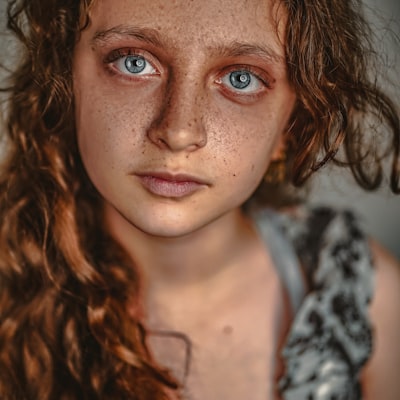Your Key To Success: Lucio Fontana

Imperfection
Concepts such as life and art must be mixed with each other because there is no reason for maintaining a separation between the human and the human. Life is art (creative energy sexual) Who would have thought that? That is why the most intriguing art is the one it talks about life that unravels various experiences, the details, curiosities, and perspectives.

When it comes to life, it is necessary to disbelieve the notion of a flawlessness that is to be attained (in order to respond to expectations of this sort, the only art we can refer to is that of the cinema). The nature of error is the essence of being Human and the block upon which we've all fallen at one time or another: impulsive judgment, impulsiveness, fear and anger, the constant need for control and security bad choices. Do you think you've not made any of these errors?
Open: a fresh perspective to view the world from
If we slip, we hurt ourselves more or less intensely and are inclined to judge the fall as a mistake, or to make the error as a result due to the expectation we set of ourselves and other people. The wound is the actual point from which we see the truth. It is from here that we are no longer in the illusion of perfect (which in the event that it was so should not hurt) and look at the things that are damaged: we examine it and then look at our own self-image.
Fontana cut with the awareness the possibility of opening up, breaking or tearing since destruction is often the most artistic act, all the more so in a culture in which, even from a young age, we are immersed in a strong, impregnating model of belief and values. It is no coincidence that Fontana said in 1963 in the course of an interview Nerio Minuzzo:
"The critiques always maligned me, but I have never was concerned about it. I just went with it and I didn't take anyone's salute. For years they called me "the one with the holes' with a little pity. Today, I realize that my cuts and holes have created a taste are accepted and have even found practical applications. In bars and theatres they make ceilings with holes. Because today, you see that people in street are aware of the new ways of life. It's the artists that are the ones who know less '.
When Fontana refers to streetspeople, he invokes the idea of imperfection in which the hole is an identical form to every other one in which the becoming of life can be seen. He is not afraid of dirt , nor of the violent nature of the creative act and throws tar at a plaster sculpture of a man , and names it 'Black Man'.
Years later, the cut transforms into the conquer of space, as an overthrow of sculpture and painting, by creating a new spatiality that contains both of them breaking away from verticality, in favor of a crossing passage.
This pulsation, which is triggered by exhaling and inhaling the canvas, reminds us from afar more scholarly and bourgeois form of the work Gina Pane later performed on her skin: the gesture remains the eternal character in the context of the art will eventually be destroyed; the wound and the cut are path, boundary and exchange. The artist herself opens the canvas and proclaims the canvas's finiteness. the holes become black holes, which give an illusion of depth. They also reveal the infinite that we will never be able to comprehend.
Wait: new things we do not yet know
Fontana described the cuts as "Waits," openings that allow new and unique things emerge that we do not yet are aware of.
When we make a mistake, when we hurt or injure the other one, we must wait a certain period before we react. It starts with the shock of making a mistake and the failure overcome, after that, figuring out what path to take to make up for it or avoid it; then we wait for the consequences of that fracture, that mistake and the possibility of an entirely new source. Or not.
Few understood (and are able to comprehend) this concept since they constantly judge what reality and the human condition ought to be, and how they should be compared to the dual nature of the canvas. We continue to defend with all our might the right practices, the right way to appear and be in the world, so that we turn to norms that ultimately define normativity.
Nothing could be more incoherent. In fontana artist that we are experts, we apply our yardstick to every other organism and ecosystem on the planet However, we are looking at the world from a narrow and biased viewpoint that has nothing to do with reality: Anthropocentrism as well as individual interpretations of the other which are often not the right ones.
Accept that there is no perfection in the strict sense.
The same is true of this society that wants us to do our best every chance they get, without reflecting on the fact that perhaps, rather than raising standards, we should become more accepting of the world in the present. Do we accept pain? Do https://cutt.ly/N25pUrt accept death? Do we accept bodies? Do we accept diversity? The most important thing is, once we accept, do we dignify?
Most of the time is it that we are able to hide what does not coincide with the 'perfection' of our own little planet or the entire universe. We are feel angry, shocked, and disgusted to be pushed aside, or put under the rug and then we show the very imperfection that we are in reality, yet do not accept.
Being aware of one's limits is essential as is recognizing the interconnectedness of everything that is the world system. Either we are ALL placed in a position to give our best or there is no competition or effort worthwhile with the sole purpose of fuelling inequality. It's great and good to know that some people who have put in much effort have made it as a result, just like those who are so fortunate. However, in a larger context, always pushing the boundaries a little further, it will be 'a perfection' in an imperfect situation; not a 'Perfection' in the absolutist sense.
Does this even exist?
Cut and let the truth be revealed
It is possible to say that Fontana was a tyrant, as from the very beginning Fontana rejected the simple paths of success, preferring to try out the untested and unpredictability, which means he decided to leave the notion of being the only that was successful, he pursued the research path that led him to unravel certain truths.
In my personal perspective, Fontana is the one who tears open the veil and allows the light through, even if he put obscuring black sails in the background. An artist of spatial art in the same way as the forerunners of that art understood not solely as a work but as a gesture an act, in and around it. in the context of actions in space, and performance as the activation of a narrative, and this is the way it is practiced in the present.
His cuts reveal all of these, opening new perspectives on art as well as new perspectives about the world and new questions. The result of this wound is more than just pain: the wound highlights mortality, shortness, uncertainty and fragility. Wounding makes us question and makes us think, and this practice is very important to keep our feet in the right place. As difficult as it is to endure and as hard as it is in a perfect story of our existence, it would be great (and just) to learn only by positive reinforcements. As long as we as a society are unable to stop each other's suffering as much than our own, we are stuck in the unsolved, and to live in an incomplete reality.
So let's enjoy the cinema and its happy endings its beauty that we take for granted and which we misunderstand and take as a template for our lives since the visual arts, however are the children of pain, and every artist who wants to speak the truth, had to pass through the wound.
